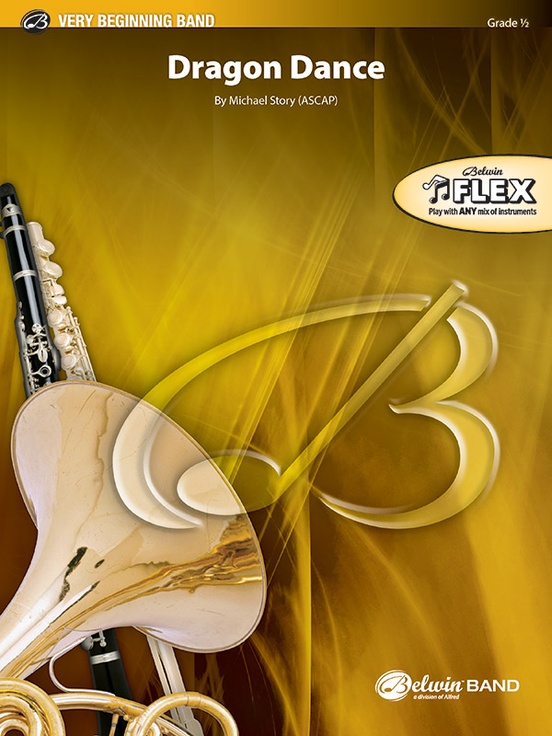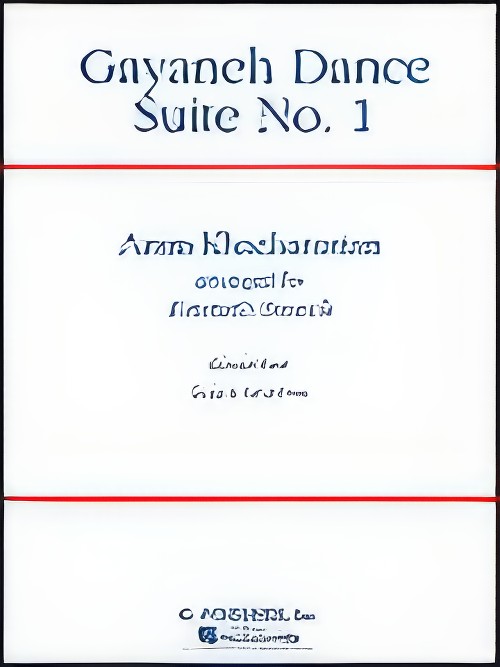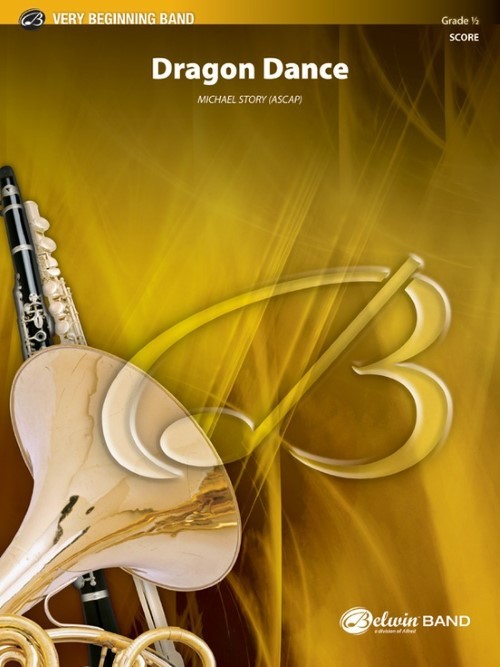Results
-
 £125.00
£125.00English Dance Suite - VII. Reel (Concert Band - Score and Parts) - Gardner, John - Noble, Paul
Arranged for the modern Concert/Wind Band, scored for three trumpets, reasonable doubling of parts where the original musical effect is not altered so that players can have a more responsible and enjoyable experience, more legible parts with less doubling on one staff, etc. The piece is offered either as a complete suite of seven movements, and also as seven individual movements which may be purchased independently. The English Dance Suite was originally composed by John Gardner for Wind Band, and has been re-set for the modern Concert Band instrumentation. Both the original version, edited and type-set by Paul Noble, and this arrangement are first editions now available for purchase to bands around the world. The set of seven Renaissance dances depict John Gardner's love of Scottish music, the Renaissance heritage, and some of his own mischievous approach to music. The first movement, Chacony on a Golden Theme, reminiscent of the Allegro movement of Purcell's Golden Sonata, is much used as a vehicle for variation on a repeated short harmonic progression, often involving a fairly short repetitive bass-line which offered a compositional outline for variation, decoration, figuration and melodic invention. In this it closely resembles the passacaglia. The Alman originated in the 16th century as a duple metere dance of moderate tempo, already considered very old, with a characteristic double-knocking upbeat of one or occasionally three sixteenth notes. It appears to have derived from a German dance but no identifiable dance and no German dance instructions from this era survive. The Hornpipe, usually in 3/2 dance rhythm, is an Irish, Scottish and English dance. It is done in hard shoes, which are used to help keep track of how the dancer keeps in time. There are two variations of the hornpipe dance: fast and slow. Usually, more experienced dancers will do the slow hornpipe but younger dancers will start out with the fast hornpipe and then switch in later years. The Corranto is a 16th-century court dance characterized by short advances and retreats, in quick triple time. The Volta (Italian: the turn or turning) is an anglicised name from the later Renaissance. Its main figure consisted of a turn and lift in a sort of closed position. The Pavan is a slow processional dance common in Europe during the 16th century. The Reel, indigenous to Scotland, consists largely of quaver (eighth note) movement with an accent on the first and third beats of the bar.
Estimated dispatch 7-14 working days
-
 £50.50
£50.50Dragon Dance - Michael Story
The Dragon Dance is a popular event in traditional Chinese culture, especially during Chinese New Year celebrations. Originating during the Han Dynasty, the dance is carried out by a team of performers that carry the dragon on poles. Drums, cymbals, and gongs are found with this characteristic dance using only the first six notes learned. Enjoy! (1:30)
Estimated dispatch 7-14 working days
-
 £94.99
£94.99Dance from the East - Thomas Doss
Dance from the East is a fiery, oriental dance. It starts with an imposing introduction with the feel of a solemn lament and seamlessly merges into a dance. The piece then builds gradually through an incessant accelerando and crescendo until it reaches a fervent passion, captivating every listener.
Estimated dispatch 7-14 working days
-
 £53.95
£53.95Dragon Dance (Flexible Ensemble - Score and Parts) - Story, Michael
This version of Dragon Dance by Michael Story is part of our Belwin FLEX offerings and is designed with maximum flexibility for use by any mix of instruments---wind, strings, and percussion, including like- or mixed-ensembles with as few as 3 players. The suggested instrumentation and a customizable Teacher Map will help you plan out how to best assign parts to suit your ensemble's needs. The 3-part instrumentation will support balanced instrumentation of the lower voices. It also comes with supplemental parts for maximum flexibility. With the purchase of this piece, permission is granted to photocopy the parts as needed for your ensemble. A percussion accompaniment track is also available as a free download. String parts have been carefully edited with extra fingerings and appropriate bowings to support students in mixed ensembles playing in less familiar keys. The Dragon Dance is a popular event in traditional Chinese culture, especially during Chinese New Year celebrations. Originating during the Han Dynasty (206 B.C.-200 A.D), the dance is carried out by a team of performers that carry the dragon on poles, fluidly mimicking its supposed movements. Drums, cymbals, and gongs usually provide the musical accompaniment to this beautiful and colorful performance. Duration: 1.30
Estimated dispatch 7-14 working days
-
 £95.00
£95.00Gayenah Dance Suite No.1 (Concert Band - Score and Parts) - Khachaturian, Aram - Snoeck, Kenneth
Selected from the ballet Gayaneh, these three colorful examples of Aram Khachaturian's writing for ballet are based on rhythms and melodic motives from different ethnic groups, ranging from the very Slavic Ukranian "Gopak" (Hopak) to the Armenian "Dance of the Maidens" and the Kurdish "Mountaineers' Dance." They vary in instrumental color and tension from festive and party-like, through sultry and romantic, to tense and almost angry. These may be performed in any combination - a single stand-alone dance movement, a contrasting pair, or all three in a complete set. A culturally rich and unique experience for players and audience alike. Duration: 7:45
Estimated dispatch 7-14 working days
-
 £50.50
£50.50Dragon Dance (Concert Band - Score and Parts) - Story, Michael
The Dragon Dance is a popular event in traditional Chinese culture, especially during Chinese New Year celebrations. Originating during the Han Dynasty, the dance is carried out by a team of performers that carry the dragon on poles. Drums, cymbals, and gongs are used with this characteristic dance using only the first six notes learned.Duration: 1.30
Estimated dispatch 7-14 working days
-
£94.99
Dance from the East (Concert Band - Score and Parts)
Dance from the East is a fiery, oriental dance. It starts with an imposing introduction with the feel of a solemn lament and seamlessly merges into a dance. The piece then builds gradually through an incessant accelerando and crescendo until it reaches a fervent passion, captivating every listener. 03:30
Estimated dispatch 7-14 working days
-
£104.99
Let's Dance Wind Band Set (Score & Parts)
Let's Dance takes you on an exciting night of dancing, being cool on the dance floor with your designer clothes, dancing the night away and forgetting about your daily worries. It's party time on the dance floor with this grooving new work. 0:08:00
Estimated dispatch 7-14 working days
-
£74.99
The Dance Club Wind Band Set (Score & Parts)
After the success of Dance Starters, a follow-up in the Flexible 4 Series was a must. Again, Peter Kleine Schaars composed four dances, in which he, by means of refreshing chords, uncomplicated rhythms and simple melody lines, takes youthful musicians to The Dance Club. There, they learn the cha-cha-cha, the rumba, disco dancing and an actual Oriental belly dance. Great fun for everyone. 0:05:00
Estimated dispatch 7-14 working days
-
 £242.50
£242.50Orpheus in Town, Dance Suite from (Concert Band - Score and Parts) - Rosenberg, Hilding - Johansson, Jerker
Dance Suite in Seven Movements. Op.75. Orpheus In Town. In 1936 the Stockholm Concert Hall was given its most distinguished artistic adornment, Carl Milles' Orpheus fountain. A Greek god lets his voice and the sounds of his lyre float over the rush and bustle of the big city far up in Ultima Thule. Two choreographers at the Stockholm Opera, Julian Algo and Vera Sager, had a brainwave. Why should Orpheus merely be a statue, a symbol of the beauty and inspiring power of music, why not give the myth about him its special Stockholm chapter as well? This is what happened: On the stage we see the columned facade of the Concert Hall and in front of it the statue group with Orpheus and the eight enraptured listeners. Suddenly the figures come to life, jump down from their pedestal and dance into the crowd at the marketplace. Orpheus, who is consumed by longing for Eurydice, begins looking for his beloved, first among other well-known sculptures in town, then in restaurants and nightclubs. At last he thinks he recognises her in a fashionable society woman and brings her to the Concert Hall. However, faced with the threat of having to spend her life in bronze at Orpheus' side, she runs away. She wasn't Eurydice after all. Or was she? For this ballet, which had its first performance at the Stockholm Opera in 1938, Hilding Rosenberg wrote vital and entertaining music in a style which is unusually to the point, and with a bright and strong orchestration. The music in the Dance Suite from Orpheus in Town is taken from the dance scenes at the nightclub: guests and a bartender perform, finally also Orpheus and his entourage. The suite consists of: 1. Rhythm of the Times (2.00); 2. Bartender's Dance (1.30); 3. Girl's Dance (1.00); 4. Dance of the Negress (2.30); 5. Trio Dance (1.30); 6. Tango (2.00); 7. Finale (1.30). Total duration: 14.00.
Estimated dispatch 7-14 working days
